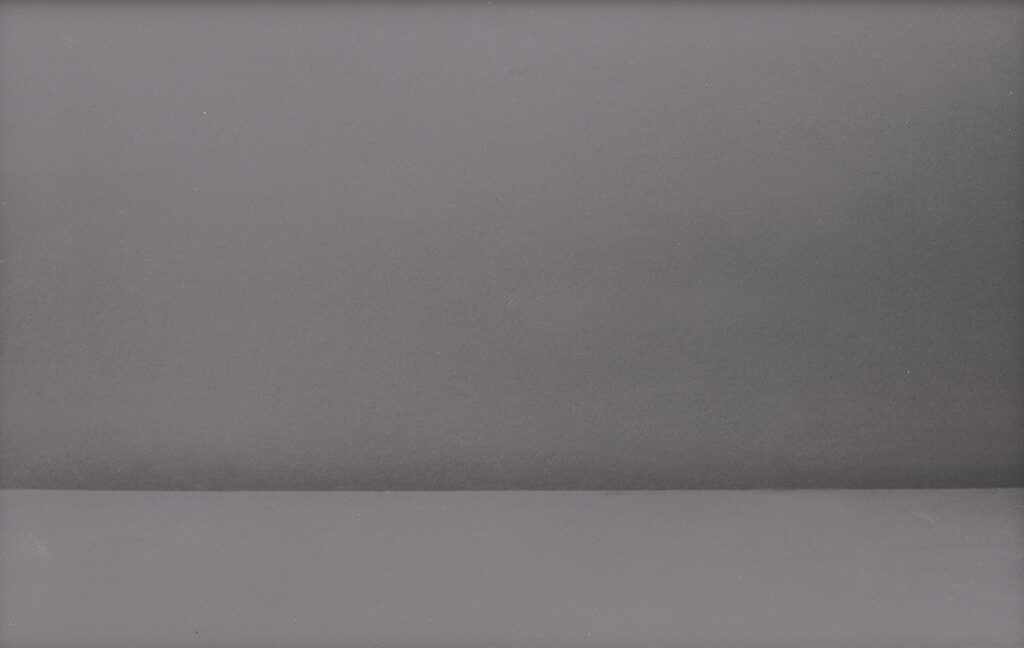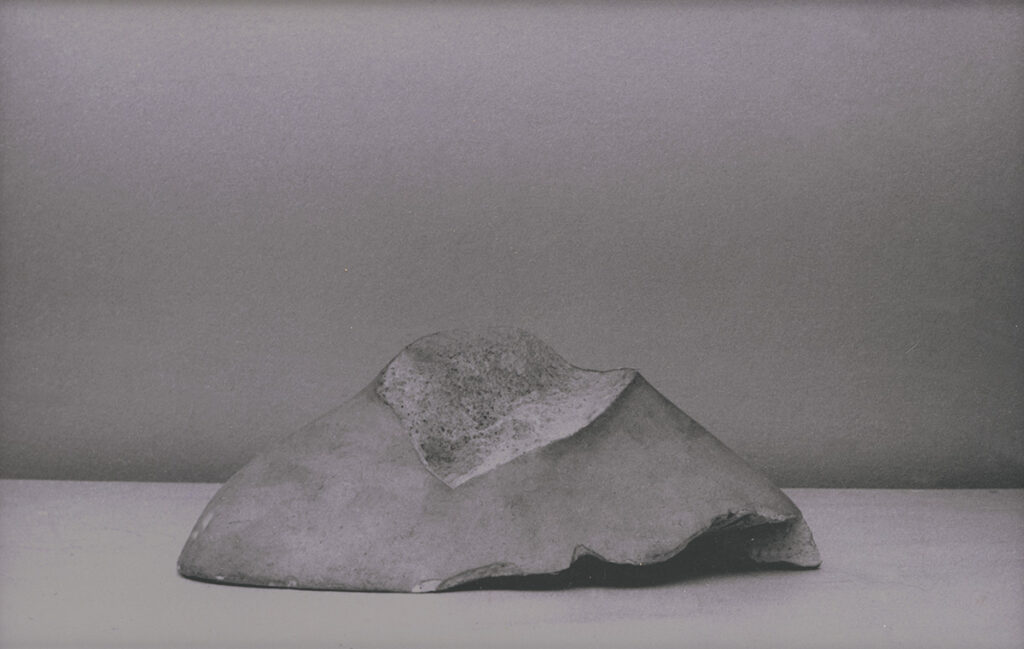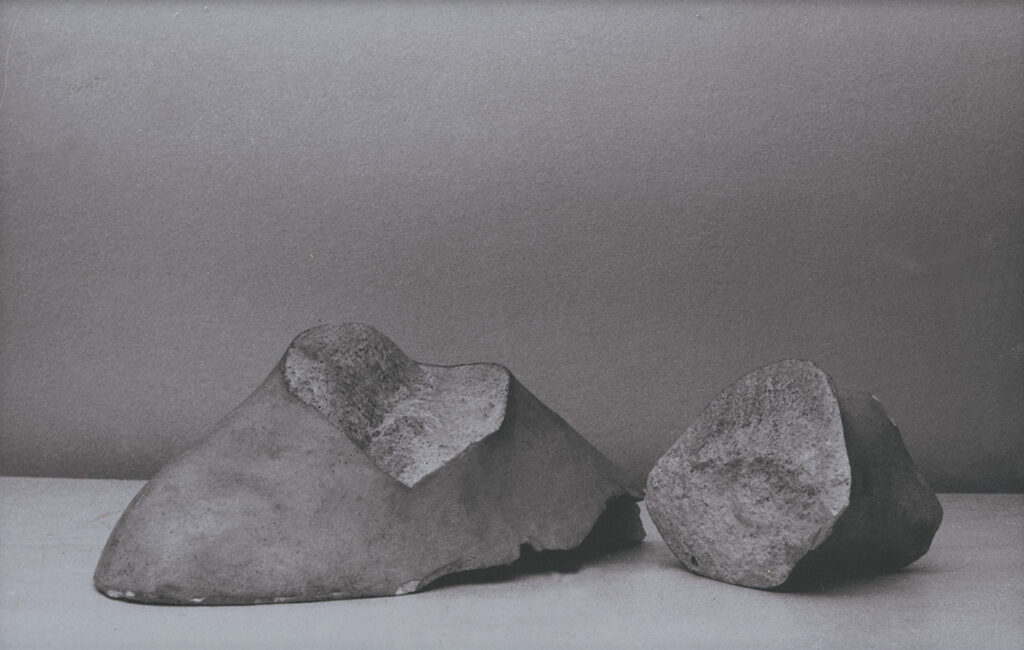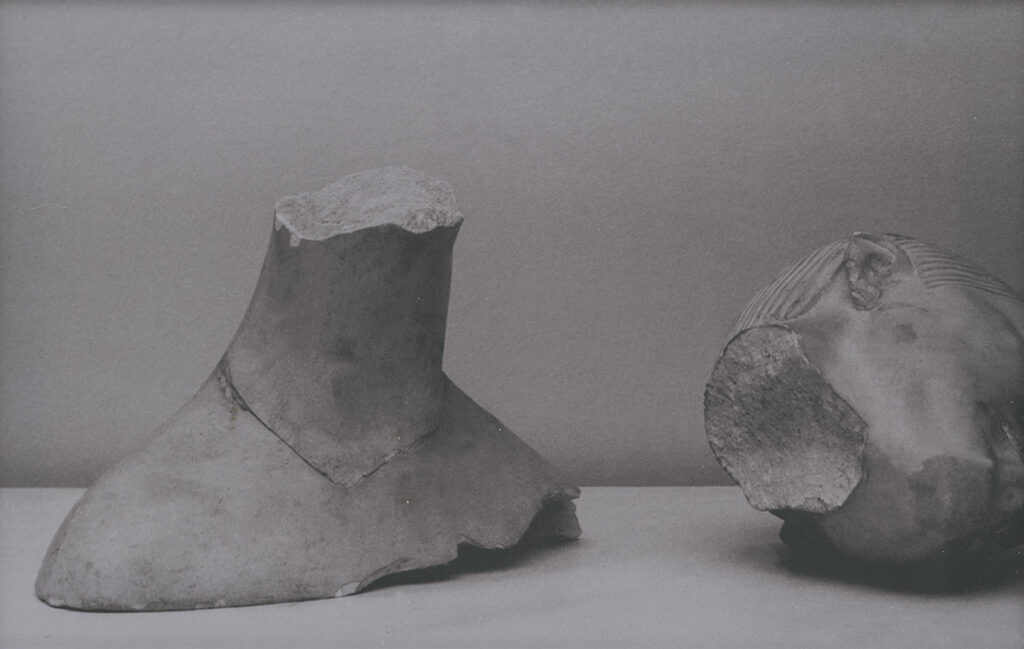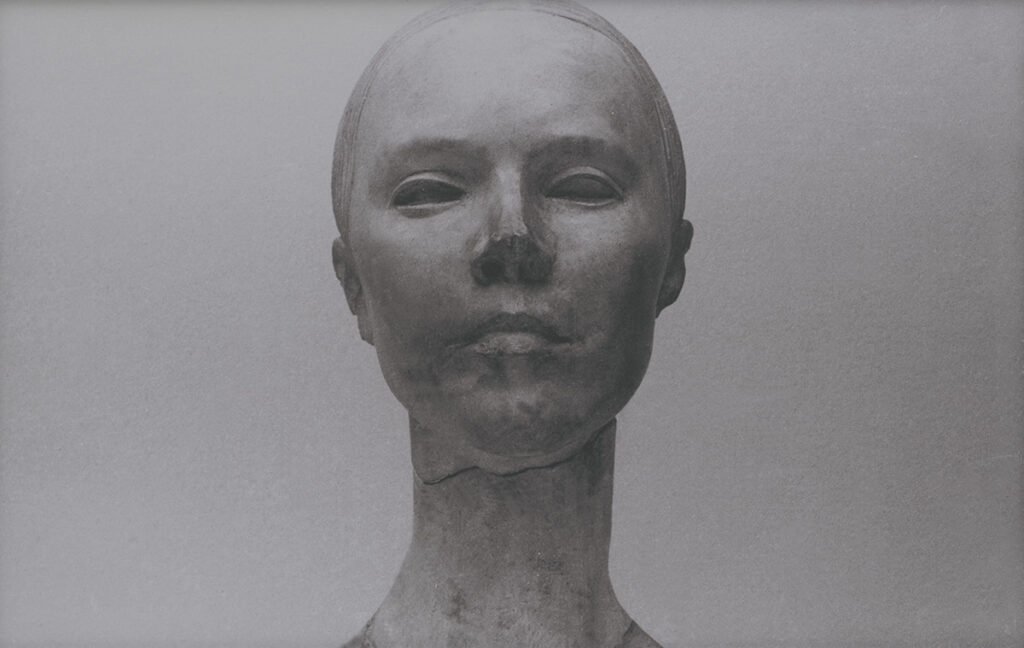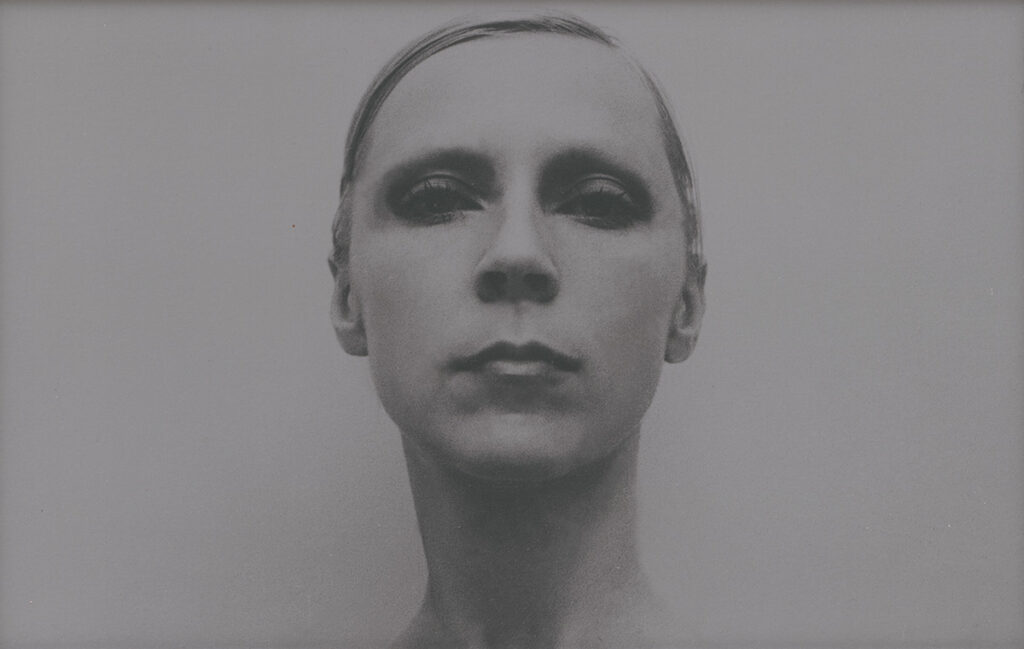The six black and white photographs, titled Revival (1-6), in the collection of the Nitra Gallery are part of the series named Introspection. Like in most of Milota Havránková’s artwork, the main motif is the exploration of her own world and the subjective manifestation of her physical and psychological existence.
The photographs form a compact narrative whole, one which resembles a film storyboard or a sequence of cartoon panels. In the first image we can see an empty, neutral background. In the second image, a part of a plaster bust appears – consisting only of shoulders. In the third image, the broken off neck is visible. In the fourth photograph, we can already see the neck placed on top of the shoulders, with the head lying beside them. The fifth photograph shows the assembled bust (however, we can only see the neck and the head in this image), which strongly resembles the artist – it is essentially her portrait. In the last image – the sixth one – the most significant change occurs: This is where the “revival” itself happens. The inanimate bust turns into Havránková’s self-portrait – en face, gently viewed from below, with her hair tied back. A pure and soft light creates mysterious shades around her eyes, allowing the beauty of her young face, which resembles a statue from antiquity, to stand out.
We can interpret the work as a metaphor of the beginning and end of life, but also as the revival of the artist’s feelings – of her inner world. The sequence can even be read the other way around: A living being is changing into stone (or ash? or dust?) which gradually falls apart until it disintegrates in the entropic infinity of time and space.
Several levels of interpretation can be observed in the photographs and, as the title of the series itself hints, they are mainly about examining the artist’s inner world, which she herself may perceive completely differently from how it seems to us – the viewer. The inside of a person can be filled with worry, torn apart (as is the bust when in pieces), but on the outside, the person may seem content and serene. Sometimes we wear such a mask willingly, sometimes our circumstances put it on us and often not even the people who are closest to us have any idea about the workings inside our minds. On her website, Milota Havránková has written this note to this series: “I immersed myself in the inner world and touched the outer.” (http://www.milotahavrankova.com)
Milota Havránková is one of the most significant figures in Slovak art photography. In the 1960s, her artwork was part of the expressive surrealism wave, together with the works of photographers such as Ľuba Lauffová, Pavol Hudec-Ahasver and Peter Breza. She is considered the pioneer of staged photography, although she continuously changes and innovates her artistic handwriting. Development, the search for new forms, experimenting and the use of current technological possibilities is characteristic for her artwork. She moves with ease between various artistic disciplines such as sculpture, painting, textile design, architecture and she also has a close relationship with experimental film, design, advertising and fashion. She has cooperated with the Echo magazine and created several monumental photography realisations for interiors (eg. the former “Zelený dom” café, the “Modrá guľa” restaurant, a spa house in Bojnice, the culture house in Martin and the Press Centre of the Czech News Agency in Prague). Her creative approach and pedagogical work significantly influenced and inspired the generation of photographers known as the Slovak New Wave (Miro Švolík, Vasil Stanko, Tono Stano, Rudo Prekop, Kamil Varga and Peter Župník). Havránková’s artistic manifesto is based on her own unique view and on capturing her own world, life, feelings and relationships with the people close to her. She often works in cycles; sorting photographs into sequences, making compositions from photograph or film cutouts and using computer manipulation. She brings artistic means of other media (colour, line, object and digital media) into the photography creation process.
Milota Havránková was born on the 7th of August 1945 in Košice. In 1960-64 she studied Photography at the Secondary School of Applied Arts in Bratislava. In 1963-65 she worked as a photojournalist at the Koliba Film Studios in Bratislava. In 1966-71 she studied Photography at the FAMU (Academy of Performing Arts) in Prague, lead by the legendary professor Ján Šmok. In 1972-77 she worked as a specialist teacher at the Secondary School of Applied Arts in Bratislava, teaching the subject Art Photography. She worked at the Studio of Experimental Art and promoted the foundation of the Department of Art Photography at the Academy of Performing Arts in Bratislava. From 1991 she was Head of the Studio of Art Photography; from 2002 she was Head of the Department of Photography and New Media at the Academy of Fine Arts and Design in Bratislava. In 1994-2005 she gave lectures at the Department of Photography at the FAMU in Prague. For several years she was Director of the PF 01 Gallery of the Student Loan Fund in Bratislava. In 1995 she was named Assistant Professor of Photography at the FAMU in Prague and in 2006 she was named University Professor of Free Art by the President of the Slovak Republic in Bratislava. In 2008, she was awarded the Crystal Wing Award in the category of Fine Art. Since 2013, she has been the Head of the Photomedia Studio at the Faculty of Fine Arts, Academy of Arts in Banská Bystrica. She lives and works in Bratislava.
—Omar Mirza
Inventory No.: F 88; F 89; F 90; F 91; F 92; F 93
Artist: Milota Havránková
Work title: Revival 1; Revival 2; Revival 3; Revival 4; Revival 5; Revival 6 (from the “Introspection” series)
Year of origin: 1979
Technique: pigment print
Material: paper
Dimensions: 25 x 39 cm
Marking: writing at the back in black Signature: YEAR – 1979 TITLE – OŽIVENIE/REVIVAL 1; 2; 3; 4; 5; 6 MILOTA HAVRÁNKOVÁ, bottom right in black marker, calligraphy: Havránková
This acquisition has been supported using public funds provided by the Ministry of Culture of the Slovak Republic.
